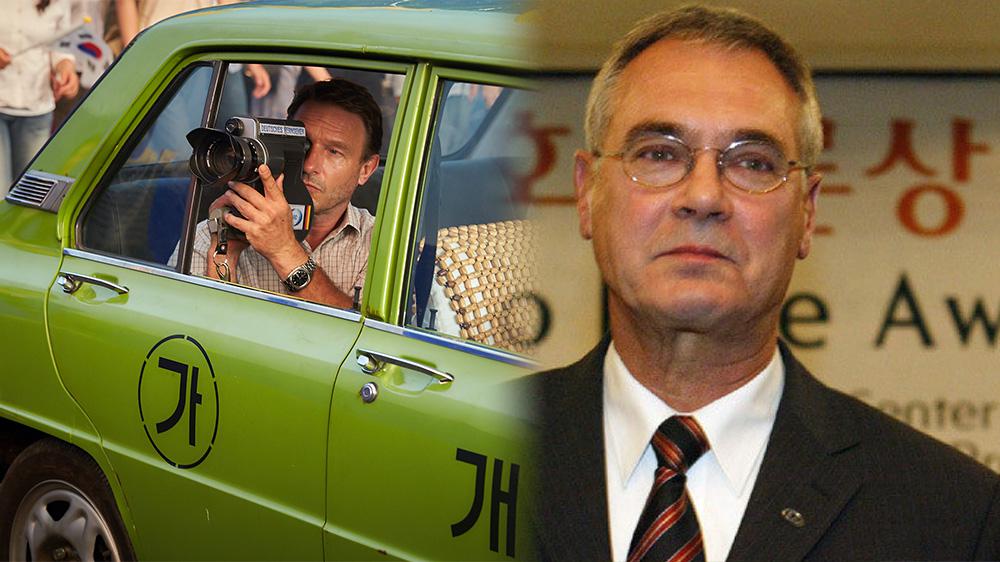
As I watched the Gwangju drama “A Taxi Driver” in a Korean neighborhood in Fairfax, Virginia, last month, I was overwhelmed with memories of my last visit to the city in April and May. At the time, I was working with Gwangju City’s 5.18 Archives to integrate my 3,500 declassified US documents on the uprising into their collection of artifacts, photographs, autopsy reports and videos from May 18. As my face and name became familiar in the media, citizens began to recognize me and flag me down on the street, and even in restaurants, for selfies and conversations.
Some of them, like the Gwangju poet Kim Jun Tae, had participated in the uprising. Others only knew what happened through their parents’ experience or from school. But all of them sought me out to thank me and express appreciation for my work, just as they do in the film to Jurgen Hinzpeter, the late German photojournalist who captured the first images of the Gwangju massacre and broadcast them to the world. “Prove that their lies are wrong,” one grateful citizen says to him as he’s about to leave the city, about the government’s attempt to suppress any reporting of the events. The official news, they told him, was “useless crap,” while people trying to expose the truth behind the military’s use of such phrases as “rioters” and “commies” to describe Gwangju’s demonstrators were denounced for spreading “groundless rumors.” Those were words and phrases I’d heard before too, both in 2017 and my first visits to the city in the 1980s.
But Hinzpeter was far more deserving than I. He and Kim Sa-bok, the taxi driver who brought him through military roadblocks into the city, risked their lives for his story. Hinzpeter’s decision to document the truth of May 18, 1980, helped change the course of history by unmasking the crimes of the Chun Doo Hwan military group as they seized power.
As the JoongAng Daily reported, his video “captured one of the most heartbreaking and anguishing moments in Korea’s history.” He helped people around the world understand the true nature of military fascism in South Korea, forever staining the reputation of Chun and his government. His work was also important to me personally: as a graduate student and political activist in 1980, I was stunned by the images he captured, and was able to quickly grasp that what had happened in Gwangju was far worse than anyone could imagine. Even though I did not know Hinzpeter was responsible for these clips until many years later, the knowledge he passed to me helped drive my pursuit for the full story about the US role in 5.18, and is something I will be forever grateful for.
In 2016, I almost got a chance to thank him in person. That May, Gwangju City invited me and several of the foreign “5.18 journalists” who had been in the city during those tumultuous events for a three-day visit. Hinzpeter, unfortunately, passed away in January. But his widow, Edeltraut Brahmstaedt, was able to come, and on May 16, 2016, spoke at a ceremony honoring her husband at the resting place for Gwangju victims at Mangwol-dong, which is adjacent to the May 18 National Cemetery. I was greatly moved by her talk and the inscription from Hinzpeter written on a banner: “I heard the voice of the people shout and realized how dangerous truth can be and the film that I recorded is unavoidable truth.” Later that day, I sat with Ms. Brahmstaedt at a luncheon for the 5.18 journalists, and expressed to her my thanks for her husband’s great work. Recently, I was glad to see she had been the guest of honor when President Moon Jae-In saw “A Taxi Driver” in Seoul.
At this year’s 5.18 commemorations, President Moon declared that his government would investigate the rebellion to determine who was responsible for ordering the massacre that took place on May 21, 1980, when over 60 people were shot dead in downtown Gwangju. “The truth of Gwangju is a rage I cannot ignore,” he said. Specifically, South Korea’s Ministry of Defense said this week it will focus on allegations that soldiers were ordered to fire on protesters from helicopters and that Chun had readied fighter jets to support the crackdown. The horrific scenes of the firing from May 21 are depicted in painful detail in “A Taxi Driver,” and underscore the need for a full investigation. But in my view, there’s an important piece of information missing from both the film and the military’s investigation into the events of 5.18: the American role.
As I documented in my original 1996 stories about the uprising, the top national security officials in the Carter administration met at the White House on May 22, 1980, and agreed to back the South Korean military. This meeting was held with the full knowledge that Chun and his martial army were responsible for the terrible bloodshed between May 18 and May 21. To be fully accurate, a statement should be added at the end of the film stating that, one day after the massacre portrayed in its climactic scene, the United States decided to support Chun’s suppression of the uprising. That would provide an “unavoidable truth” to the people of South Korea, and simultaneously honor the memory and integrity of the great Jurgen Hinzpeter. The people of Gwangju deserve no less.






